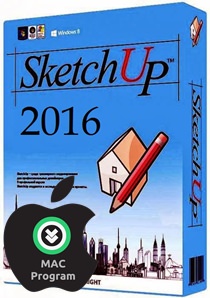Ntfs Reader For Mac
How to read Mac OS HFS drives in Windows for free. (Apple introduced NTFS support in OS X Leopard so you can share a Windows drive with your Mac easily enough.). Best usb 3.0 card reader for mac. Read only NTFS from native Mac OS X [*]To Read/Write/Format NTFS from Mac OS X, here are some alternatives: For Mac OS X 10.4 or later (32 or 64-bit), install Paragon (approx $20) (Best Choice for Lion). The latest version works with macOS 10.12 Sierra and Apple’s newest security features and supports all NTFS versions from Windows NT 3.1 to Windows 10. It also has multi-language support. If you work on a Mac computer and need to read or write files from HDD, SSD or a flash drive formatted under Windows, you need Microsoft NTFS for Mac by Paragon Software. Write, edit, copy, move and delete files on Microsoft NTFS volumes from your Mac.

Click to expand.Paragon is quite stable and has been used by countless Mac users successfully for years. Just because you happen to have particular problems on your computer doesn't mean that Paragon is to blame. Rather than rant, why not do some basic troubleshooting to find the real source of your problem? And yes, backups are always recommended. (which is in your /Applications/Utilities folder) Choose the appropriate format: (Hierarchical File System, a.k.a. Mac OS Extended (Journaled) Don't use case-sensitive) • Read/Write HFS+ from native Mac OS X • Required for or or backups of Mac OS X system files.
[*]To Read/Write HFS+ from Windows, Install [*]To Read HFS+ (but not Write) from Windows, Install • Maximum file size: 8EiB • Maximum volume size: 8EiB • • You can use this format if you only use the drive with Mac OS X, or use it for backups of your Mac OS X internal drive, or if you only share it with one Windows PC (with MacDrive installed on the PC) (Windows NT File System) • Read/Write NTFS from native Windows.  • Read only NTFS from native Mac OS X [*]To Read/Write/Format NTFS from Mac OS X, here are some alternatives: • For Mac OS X 10.4 or later (32 or 64-bit), install (approx $20) (Best Choice for Lion) • For 32-bit Mac OS X, install (free) (does not work in 64-bit mode) • For 64-bit Snow Leopard, read this: • Some have reported problems using (approx $36).
• Read only NTFS from native Mac OS X [*]To Read/Write/Format NTFS from Mac OS X, here are some alternatives: • For Mac OS X 10.4 or later (32 or 64-bit), install (approx $20) (Best Choice for Lion) • For 32-bit Mac OS X, install (free) (does not work in 64-bit mode) • For 64-bit Snow Leopard, read this: • Some have reported problems using (approx $36).
• Native NTFS support can be enabled in Snow Leopard and Lion, but is not advisable, due to instability. • AirPort Extreme (802.11n) and Time Capsule do not support NTFS • Maximum file size: 16 TB • Maximum volume size: 256TB • You can use this format if you routinely share a drive with multiple Windows systems. (FAT64) • Supported in Mac OS X only in 10.6.5 or later. • Not all Windows versions support exFAT.
• • AirPort Extreme (802.11n) and Time Capsule do not support exFAT • Maximum file size: 16 EiB • Maximum volume size: 64 ZiB • You can use this format if it is supported by all computers with which you intend to share the drive. See 'disadvantages' for details. (File Allocation Table) • Read/Write FAT32 from both native Windows and native Mac OS X.
In the address bar, type and further a pop up box will appear on your screen, in which your login details will be asked (username and password). How to connect mac extreme router to a netgear wifi router for use as extender.
Ntfs Reader For Mac Free
[*]Maximum file size: 4GB. • Maximum volume size: 2TB • You can use this format if you share the drive between Mac OS X and Windows computers and have no files larger than 4GB.
Ntfs Reader For Mac Sierra
OS X supports the option to read NTFS-formatted drives, but has not supported writing to these drives. Therefore, the use of a third-party driver such as Paragon NTFS or Tuxera NTFS has been required for those seeking full NTFS support; however, OS X does support writing to NTFS, but this feature is just not enabled by default. To enable this feature, you have to do so on a per-volume basis, by editing the system's hidden fstab file to adjust the way the drive is automatically handled when attached and mounted. First ensure that your NTFS drive has a simple single-word name, and then go to the Applications > Utilities folder and launch the Terminal program. In here, run the following command to edit the fstab file (supply your password when prompted): Enter this line into the fstab file, changing the label 'NAME' to match that of your drive.